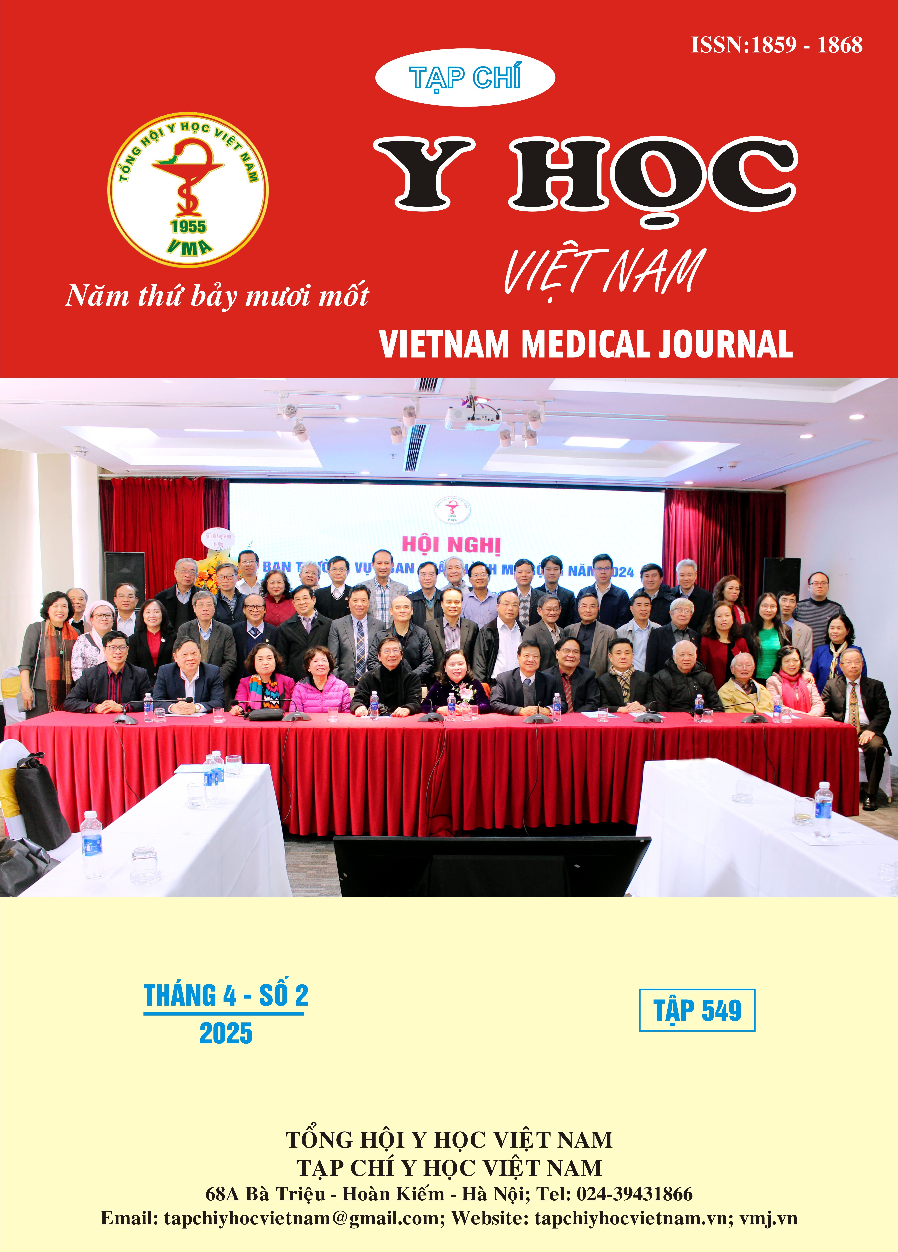THE ROLE OF ULTRASOUND IN SCREENING THYROID NODULAR DISEASES
Main Article Content
Abstract
Background: Thyroid nodular diseases have become one of the most common endocrine disorders, with an increasing incidence worldwide. Ultrasound plays a critical role in the early detection and risk stratification of thyroid nodules. This study aims to describe the ultrasound features of thyroid nodules and to apply the TIRADS classification system to evaluate nodular lesions, thereby guiding the indication for fine-needle aspiration (FNA) cytology in adult patients in An Giang province. Methods: A cross-sectional study was conducted on 441 adult patients (mean age 53.5 ± 12.7 years, range 16–94) with thyroid nodules detected on ultrasound. The study assessed various ultrasound parameters including nodule location (by thyroid lobe, position within the lobe, and relation to the thyroid capsule), size (height, width, and height-to-width ratio), composition (solid, mixed, cystic), echogenicity, margins, and calcification features. Based on these parameters, nodules were classified using the ACR-TIRADS 2017 system. Results: The majority of nodules exhibited a “height ≤ width” configuration, suggesting benign characteristics. TIRADS III was the most frequent category (40.8%), followed by TIRADS I and II (27.7%), while 31.5% of nodules fell into high-risk categories (TIRADS IV and V), which warranted FNA for cytological assessment. Conclusion: Ultrasound is an invaluable, non-invasive tool for screening thyroid nodular diseases. The integration of detailed ultrasound features and the TIRADS classification aids in accurate risk stratification and optimizes the selection of nodules for FNA. These findings support the role of ultrasound in improving diagnostic accuracy and guiding clinical management, thereby reducing the risk of overlooking potentially malignant nodules and enhancing patient care.
Article Details
Keywords
Thyroid, thyroid nodule, ultrasound, TIRADS, FNA, thyroid diseases
References
2. Moon WJ, Jung SL, Lee JH, et al. Benign and malignant thyroid nodules: US differentiation—multicenter retrospective study. Radiology. 2008; 247(3):762-770.
3. Tessler FN, Middleton WD, Grant EG, et al. ACR Thyroid Imaging Reporting and Data System (TI-RADS): White Paper of the ACR TI-RADS Committee. J Am Coll Radiol. 2017;14(5):587-595.
4. Baloch ZW, LiVolsi VA, Jain P, et al. Guidelines from the National Cancer Institute Thyroid Fine-Needle Aspiration State of the Science Conference. Cancer. 2002;94(6):1774-1781.
5. Giovanella L, Ceriani L, Lissiani A, et al. The Role of Ultrasound in the Evaluation of Thyroid Nodules. Eur Thyroid J. 2019;8(4):193-204.
6. Altman DG. Practical Statistics for Medical Research. Chapman & Hall/CRC; 1991.
7. Rosario PW, Lima J, Hay ID. Thyroid nodules in adults: Ultrasound and fine-needle aspiration biopsy. Am Fam Physician. 2012;85(4):317-323.
8. Kwak JY, Han KH, Yoon JH, et al. Thyroid imaging reporting and data system for US risk stratification of thyroid nodules: A step in establishing better stratification of cancer risk. Radiology. 2011;260(3):892-899.
9. Middleton WD, Teefey SA, Reading CC, et al. Comparison of thyroid nodule ultrasound characteristics and prediction of malignancy using a computer model. AJR Am J Roentgenol. 2006;186(3):802-807.


